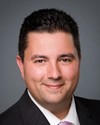Certainly we are still at the early stages of being able to analyze, because of how broad the consultation was. We started from the day we were invited in by the alliance. We began a consultation process to see all the different community groups. As I said, we've been out to 120 different organizations. We've met with them. We've sat down and had discussions. We work very closely with the groups that are here today. We've had many meetings with the groups that are here with us today.
Whether it was the York Federation of Agriculture, the anglers of Ontario, or groups that have had a long preservation process and were some of the initial people who started the process, what we heard from all of them was that we should continue to build the park, continue to move forward, and continue to give people access to it. One of the things we've been especially proud of during the process has been a truly unprecedented relationship we've begun to build with all of the first nations.
I'm sure that most people are aware of Parks Canada's extremely proud history and heritage of first nations relationships across the country. There are probably few other federal government agencies that have the level of first nations cooperation we have across the country. We've been able to bring together almost all of the traditional groups that have been in the park, from the first nations perspective. They've come around the table. They've given us input. We've been able to look at the 500-year-old Seneca Village and see how the first nations want to speak about that as the carrying place where they did portaging, using the traditional knowledge of the area to really help us build toward the future.
We've been to Yonge Street, Rogers Centre, Pickering City Hall, and Scarborough Town Centre. We've been to every farmers' market you can think of. It has truly been an unprecedented period for us to consult.



